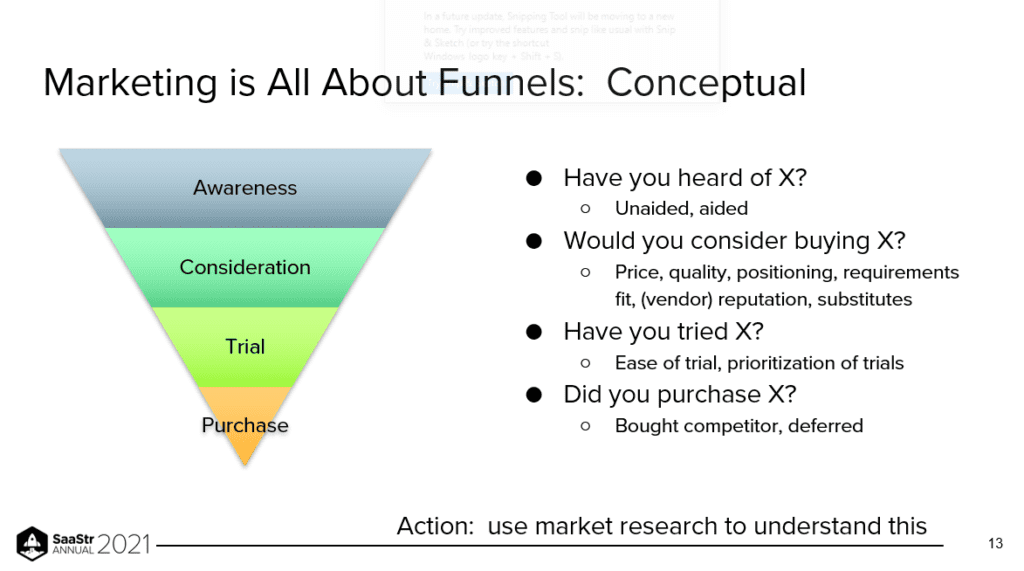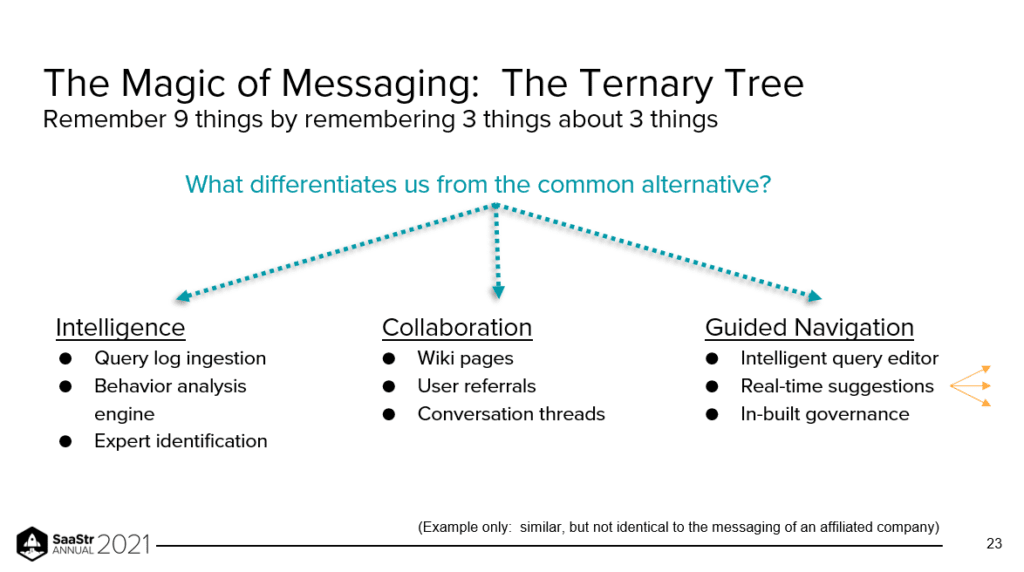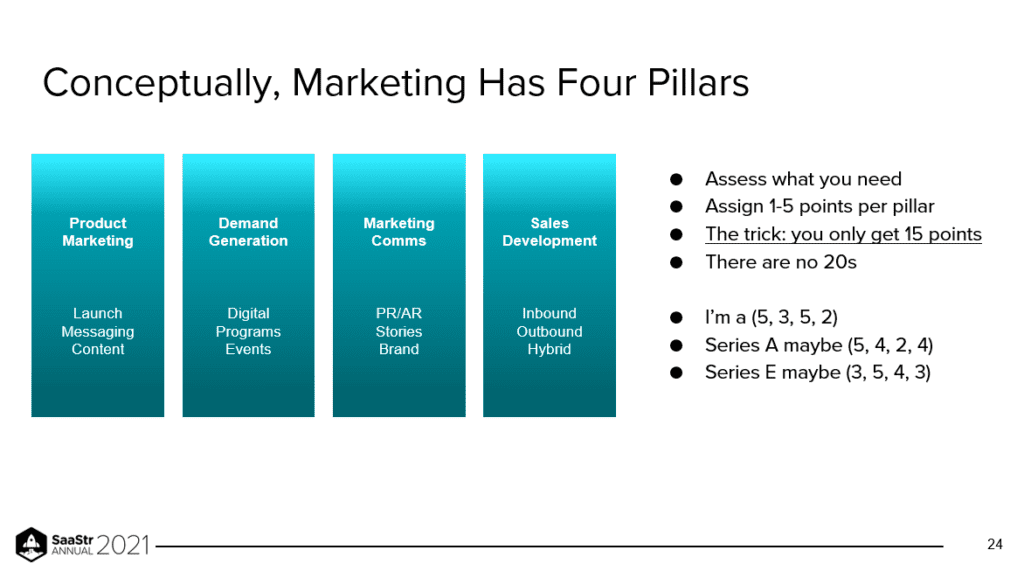Have you ever had a sudden realization that you’re spending more on sales and marketing than research and development? If so, you aren’t alone –– the median enterprise SaaS company spends twice as much on sales and marketing than R&D. Often, product-oriented founders think they’ve created a technology business that seeks distribution when in reality they’ve founded a distribution business that makes technology.
When it comes to marketing, executives can grow frustrated or intimidated by the sheer volume of numbers and metrics, ill-defined terminology, unclear processes, and potential conflict between sales and marketing teams. So how can a CEO manage their marketing effectively?
Dave Kellogg, EIR at Balderton Capital and Principal at Dave Kellogg Consulting, shares five tips to help founders and CEOs navigate their marketing strategy and develop clarity around what successful marketing looks like.
#1 Reverse-Engineer Marketing From Buyer Empathy
If you take the time to consider your buyer’s POV, the marketing team’s job should sharpen into focus. You can derive marketing from two primary buyer questions:
- Why buy one at all, or why buy this one?
This question demands you understand what you are telling the buyer. Are you asking them to choose you from a sea of competitors, or are you trying to convince them to adopt a new, category-defining product? Figure out whether you are emphasizing differentiators or product value. - Is this a low or a high consideration purchase?
Will your buyer treat the product as an easy, quick buy, like grabbing a pack of gum in line at the grocery store? Or is it more like purchasing a car, where they spend time thinking over a purchase, researching and comparing car models, and test-driving the vehicle?
Notably, price is not the defining criterion in whether the purchase is low or high consideration. As Kellogg says, “Now you might think that price is the only factor that drives consideration level, but it’s not…we need to understand the question the buyer is trying to answer and then how much energy they’re putting in to get that answer.”
Action & Tips:
- Take the time to conduct custom periodic studies of market research, category formation, gong call recordings, etc.
- Use a mixture of long and short sales cycle tactics.
- Create a seminal, detailed white paper.
- Directly ask your customers about their buying process and considerations.
#2 Marketing is All About Funnels
There are plenty of funnels out there, but here is a simple flow that helps center your efforts:
- Awareness: Have you heard of X?
- Consideration: Would you consider X?
- Trial: Have you tried X?
- Purchase: Did you purchase X?
This is your most basic funnel, but you also need to create funnels specific to all your pipeline sources. Kellogg describes the pipeline sources this way: “In reality, you have four pipeline sources in your business: Marketing, which gets a lot of attention; SDR Outbound which you should be using in a named account strategy; Alliances, which can easily account for 10 to 30% of your pipeline…and Sales Outbound with a targeted strategy.”

Action & Tips:
- Measure pipeline by opp count, not ARR dollars.
- Remember to document your pipeline gen goals for all your sources.
- Make marketing the quarterback of the pipeline. They should forecast the pipeline coverage for all four sources.
#3 Use Models as Guiding Abstractions
CEOs love models. They can measure and predict company performance, but be careful how heavily you lean on them. Kellogg advises that you should indeed build models, but with the knowledge that reality is far messier and more unpredictable in comparison. As a leader, you must recognize the limitations of models and use them as a tool of enlightenment rather than holding executives’ feet to the fire over model outputs. He goes on to say, “Often, particularly product-oriented founders are very quantitative people. They kind of fall in love with these models…and they start using them as tools of oppression. Everybody then hates the models, and they forget the reality of the underlying business.”
Action & Tips:
- Instead of holding your teams strictly to the model outputs, hold them accountable for pipeline coverage and sales performance.
- Ground yourself with these two sessions at every QBR:
- Win/Loss Analysis to inform why you are winning and losing deals.
- Win-Touch Analysis to remind you of the reality of how deals are won.
#4 Messaging is a Structured FAQ
Your brand message can make or break you, so you should base it on fundamental, clear points that answer the most common questions your buyers are likely to ask.
Your strategy should emphasize simplicity and memorability. Your marketing team’s task is to turn a grey reality black and white for your consumers. However, you’ll encounter a bit of nuance depending on the situation. If your sales and marketing team is on offense, you’ll want to lean in hard to the black and white simplicity. (“We are the only company that offers this unique feature; nobody else does this.”) If you’re on defense, you may switch tactics and muddy the waters, going grey again. (“Well, actually, it’s not true that we don’t have a partner program. We will be launching it this quarter…”)

Action & Tips:
- Create a Ternary Messaging Tree. First, you should draft your three most important points as your messaging pillars. Then, for each of the three points, add three additional points to expound upon in longer-form content or sales conversations.
#5 Hire Your Next Marketing Leader Using Pillar Profiles
When you are looking to hire a CMO to lead your marketing team, you might want an expert in every area– a renaissance man or woman of sorts. But, in reality, you will likely find someone who has varying strengths in different areas. The best way to find a realistic fit for this critical position is to create a pillar profile for each serious candidate. So, first, consider the four pillars of marketing:

Then assess your company’s unique needs, and assign 1-5 points to each pillar. The trick is, you can only give out 15 points. Next, score each candidate based on this system and compare their strengths against each other, and choose the person who most closely meets your necessary criteria.
Action & Tips:
- Understand there is no perfect CMO out there, and you need to prioritize strengths in your most critical areas.
- Create pillar profiles to compare candidates to each other and your ideal to find the right person.
Key Takeaways
- The odds are that you’re spending twice as much on sales and marketing than you are on R&D, and that is actually pretty common.
- Lean on market research, buyer feedback, and empathy to understand your buyers and win more customers.
- Use projections and models as guiding lights and recognize their limitations.
- Great marketers make things easy; bad ones obfuscate.
The post A CEO’s Guide to Marketing With Dave Kellogg: Five Things Every Founder Should Know (Podcast 515 and Video) appeared first on SaaStr.
via https://www.aiupnow.com
Amelia Ibarra, Khareem Sudlow
